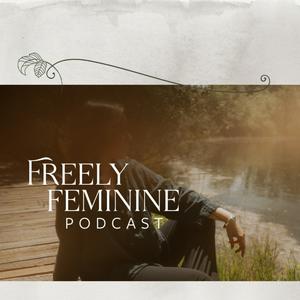Beauty is Not Optional: The Feminine Blueprint for Safety, Vitality, and Belonging
Beauty has long been dismissed as optional, indulgent, or even vain. But when you trace it through the nervous system, evolutionary biology, and women’s lived experience, you discover it’s anything but. Beauty isn’t decoration, it’s nourishment. It’s how the body regulates. It’s how the feminine signals safety, belonging, and life.In this episode, I explore the true role of beauty:Why expression and adornment are regulation for women, not vanityHow our homes act as extensions of the nervous system, shaping safety and harmonyWhat neuroaesthetics and neuroarchitecture reveal about why bland, sterile spaces quietly dysregulate usWhy the golden ratio shows up in nature, art, and the human face, and why our brains are wired to find it beautifulHow oxytocin links beauty to women’s stress regulation, and why your cycle changes what beauty you crave each weekThe sacred feminine role of stewarding beauty in our homes, families, and workThis is a conversation about remembering that beauty isn’t extra. Beauty is survival. Beauty is stewardship. And perhaps most of all... beauty is how we heal.This episode is brought to you, as always, by Alchemy. Alchemy my six-month, one-to-one mentorship for women who are ready to build businesses that nourish them as much as they nourish others.During our time together we craft scaffolding of your business to becomes strong enough to hold the power of your vision. Systems that carry you. Messaging that feels like your soul. A client journey that’s more like opening the door into a warm, candlelit home than another transaction.It’s the place where the masculine does its job — providing, protecting, structuring — so your feminine can move with freedom. Create. Play. Lead without depletion.Because if your business doesn’t feel beautiful to live inside, it won’t last. Beauty, harmony, and structure aren’t extras. They’re the blueprint for longevity.If your business has been feeling heavy or mechanical, this is your invitation. You can explore the program at rosewoodwoman.com/alchemy.Ishizu, T., & Zeki, S. (2011). Toward a Brain-Based Theory of Beauty. PLoS ONE. Shows beauty reliably engages medial orbitofrontal cortex across music and visual art. PubMed CentralUlrich, R. S. (1984). View Through a Window May Influence Recovery from Surgery. Science. Classic hospital-window study linking natural views to faster recovery and lower analgesic use. ScienceKaplan, S. (1995). The Restorative Benefits of Nature: Toward an Integrative Framework. Journal of Environmental Psychology. Foundational paper for Attention Restoration Theory. ScienceDirectKaplan, R., & Kaplan, S. (1989). The Experience of Nature: A Psychological Perspective. Book introducing ART and “soft fascination.” Internet ArchiveEllard, C. (2016). The Psychological Cost of Boring Buildings. The Cut. Popular summary of lab and street data on facade monotony and mood/physiology. The CutEllard, C. (2017). A New Agenda for Urban Psychology. studies. Urban Design & Mental HealthUvnäs-Moberg, K., et al. (2022). stress. FrontiersHandlin, L., et al. (2023). eLifeHaselton, M. G., et al. (2007). PubMedbleske-rechek.comDurante, K. M., Li, N. P., & Haselton, M. G. (2008). PubMedSAGE JournalsDurante, K. M., Li, N. P., & Haselton, M. G. (2011). Ovulation, Female Competition, and Product Choice.Rutgers Business School“Landscape of fear” in ecology FrontiersMammals avoid exposed, cue-poor spaces under threat. ResearchGateKaplan, S. (1995). ScienceDirectUlrich (1984). ScienceJordan, G., & Mollon, J. D. (1993, 2010, 2019). PubMedJournal of VisionCambridge University RepositoryJameson, K. A., Highnote, S. M., & Wasserman, L. M. (2001). PubMed


